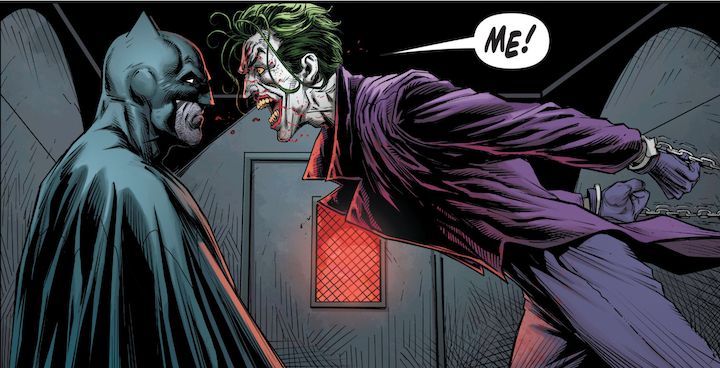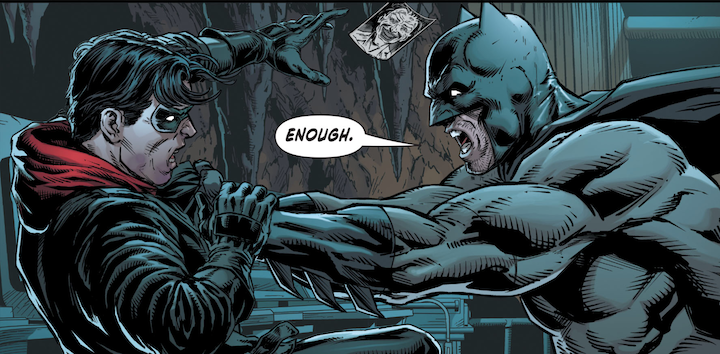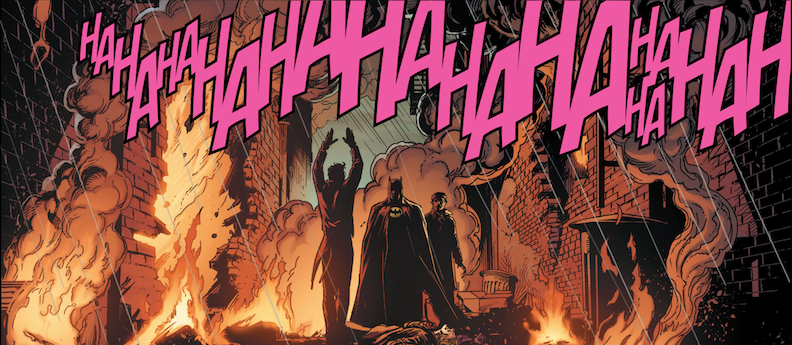How many Jokers does it take to drive Batman completely crazy?
Batman: Three Jokers 3
Written by Geoff Johns
Pencils and Inks by Jason Fabok
Colors by Brad Anderson
The conclusion to Geoff Johns’ examination of the Joker and what he means to the members of the Bat-family is not short on tension. It is not short on big moments, nor is it short on chaos and violence befitting a story about the Clown Prince of Crime.
What the final issue of Batman: Three Jokers does not do is give the DC Comics universe an extra couple of Jokers for Batman to battle. At the end of this issue, we are right back to where we were before the end of the New 52 era, when we had only one Joker terrorizing Gotham City. After Red Hood murdered one Joker, we get a second Joker death here at the hands of the final one. Chaos incarnate, a Joker divided among itself can not stand itself.

The idea of three Jokers started with the potential to completely alter Batman’s world, just as the world of the DC Comics heroes was about to be completely altered. It was an interesting concept that could have had promise. The three aspects of the Joker’s personality that Johns examines – Comedian, criminal and killer – could be explained away by multiple people just as easily as it could by multiple personalities.
In the end, the Killer won out. Uninterested in the Criminal’s plans to create a “better Joker,” one who had a personal history with the Batman to make Joker his ultimate focus, he put a bullet in the other Joker’s head, leaving him as the one, true archenemy of the Bat.
Hundreds of people dead via Joker’s poison, an even bigger rift in the Bat-family because Jason Todd – the Red Hood – murdered one of the Jokers and in the end, the battle between Joker and Batman continues.

Johns doesn’t bother to explain which of the Jokers came first, or how there came to be three of them, which is rather fitting. Joker – even three of them – doesn’t need an origin. But that doesn’t stop Johns from giving him one.
Once again cribbing from Alan Moore, Johns harkens back to the seminal one-shot The Killing Joke at the end of the issue. When Alfred laments to Bruce Wayne that it was a shame that Joker knows Batman’s identity when they could never figure out the Joker’s, Bruce reveals that he knows exactly who the Joker is, and he’s known basically the whole time.
The final issue basically codifies the origin story Joker told in the Killing Joke – which was said to not be a definitive origin, just the way Joker remembered it that day. The epilogue is meant to be a big reveal, and the reader is supposed to share Alfred’s shocked expression at Batman’s ability to keep such a big secret from those closest to him – especially considering he tells Batgirl and the Red Hood he has no idea earlier in the issue.
It’s a small change, really – a different take in a Black Label book that has no real bearing on the continuity – but it feels like another example of a modern creator taking something of Moore’s and missing the point. That small nagging point doesn’t erase the quality of the series overall, though it does end the series on a bit of a sour note. It’s also, likely, the part of the series that will be most remembered in the end.
Time will tell if that’s a good thing or a bad thing.
